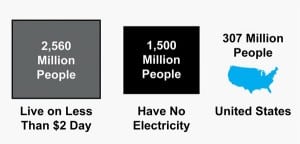Commentary
-
Commentary
Ash Me No Questions
The Environmental Protection Agency is expected to select its approach for future regulations regarding coal ash storage later this year. One option would be to continue classifying the waste as nonhazardous and leave enforcement with the states. Another option—the worst case for the power industry—would be a determination that coal ash is a hazardous waste, which would result in increased federal oversight and lawsuits.
-
Commentary
U.S. Power Sector Must Embrace Low-Carbon Future
The U.S. electric utility sector is undergoing a transformation unparalleled in its history. Extraordinary challenges, driven by the urgency of climate change and other market forces, are compelling the industry to abandon its century-old business model of building large, fossil fuel plants to sell increasing amounts of electricity.
-
Commentary
Biomass: Short-Term Drawbacks, But Long-Term Climate Benefits
In recent months, two noteworthy letters have been sent to Congress by eminent scientists examining the merits—or demerits—of biofuels in the climate debate.
-
Commentary
The Nexus of Energy and Water
The age-old adage “water and electricity don’t mix” does not apply to 21st-century infrastructure planning. The two entities can no longer be viewed as separate commodities. The demands on both are intertwined, so solutions for meeting new and growing challenges associated with water scarcity and carbon regulations must also be integrated. Water is essential to […]
-
Commentary
How "Framing" Can Bamboozle Regulators
The plurality of regulatory proceedings originate with utilities seeking to improve their profitability. Profitability being part of the public interest, these submissions deserve our attention. But what if these filings are “framed” to divert our attention away from our public interest mission?
-
Commentary
Energy and Water: A Matter of Interdependence
Water resources represent essential inputs into energy production while, at the same time, energy availability is a key factor in effective water resource use.
-
Commentary
Why September Marks the New Year
While the New Year officially begins Jan. 1, in my mind, the year really begins the day after Labor Day. That’s when Washington again takes up its never-ending, seldom-succeeding task of pushing the policy boulder up the hill.
-
Commentary
The Hidden Agendas Behind Citizen Suits
The enforcement mechanisms of the environmental statutes in the 1960s were both cumbersome and ineffective.
-
Commentary
The Statistical Connection Between Electricity and Human Development
“Electricity use and gross national product [are] strongly correlated. The relationship…is so important that it should be considered in developing…energy and economic policies [which] seek to lower the real costs of electricity supply,” U.S. National Academy of Sciences, 1986
-
Commentary
For Grid Expansion, Think “Subregionally”
When—not if—we pass climate legislation, we will put the U.S. on a path toward a low-carbon electric generation sector. As part of this shift, we’ll need more transmission, including lines to wind and solar power plants that are sometimes located far from today’s power grid. The question is: How do we plan for these new lines and how should we pay for them?

